Abstract
The hemolytic activities of 91 strains of Vibrio parahaemolyticus isolated from human diarrheal stools, sea fish, and sea water; 21 suspected V. parahaemolyticus cultures isolated from wound infections; 14 nonpathogenic marine vibrios; and 21 V. parahaemolyticus isolated from moribund blue crabs Callinectes sapidus were compared. Potentially pathogenic V. parahaemolyticus strains could be differentiated from the related nonpathogenic marine vibrios, because the former hemolyzed hamster, sheep, and human blood, whereas the latter were nonhemolytic. In addition, V. parahaemolyticus isolated from tissue infections could be differentiated from those of the first group isolated from sea fish or human stools, because the former exhibited primarily an α-hemolytic reaction on chicken blood; the latter exhibited mostly β. It is suggested that V. parahaemolyticus isolated from blue crabs may be differentiated from the first group on the basis of their hemolysis of human blood. A useful schema of the differential hemolytic reactions, exhibited by V. parahaemolyticus, tissue infection vibrios, and nonpathogens on hamster, sheep, chicken, goose, and human blood is given. The patterns of hemolytic activity of these groups on special human blood-agar plates (Kanagawa hemolysis) resembled that seen on ordinary human blood-agar.
Full text
PDF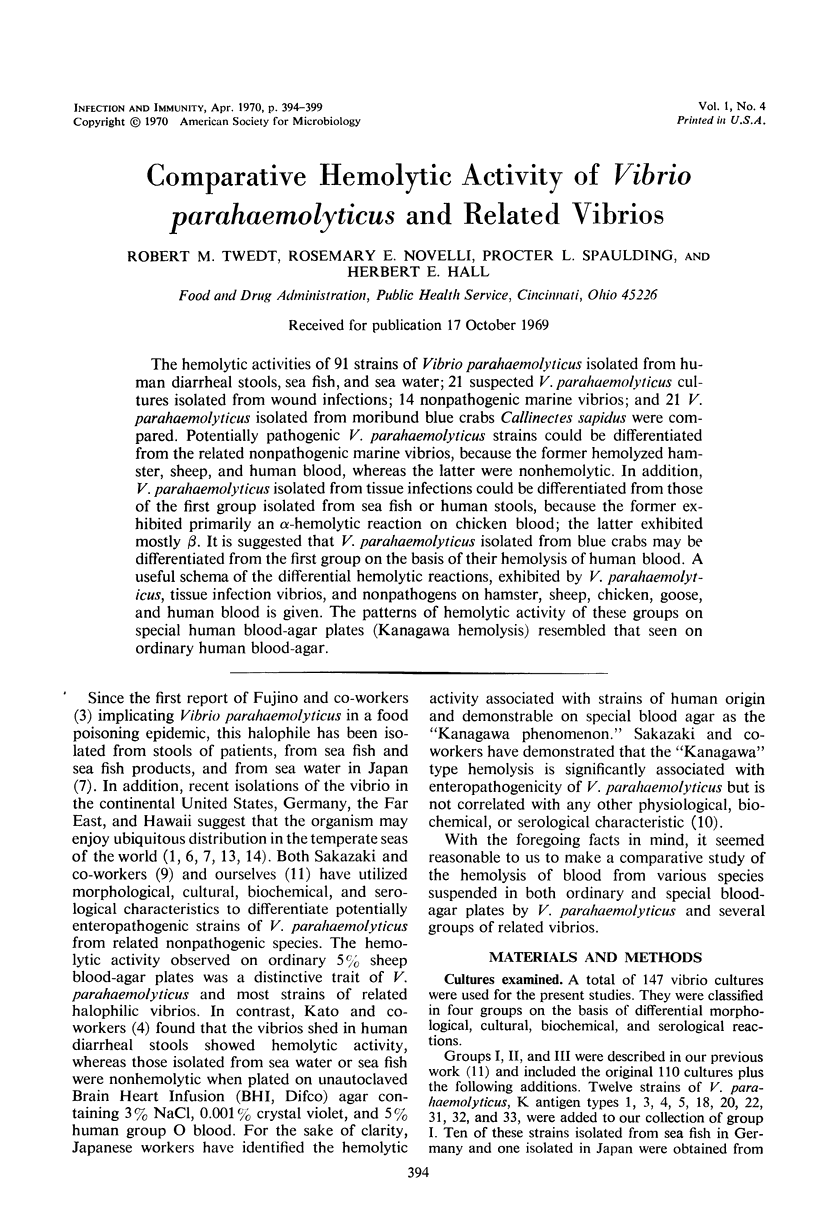
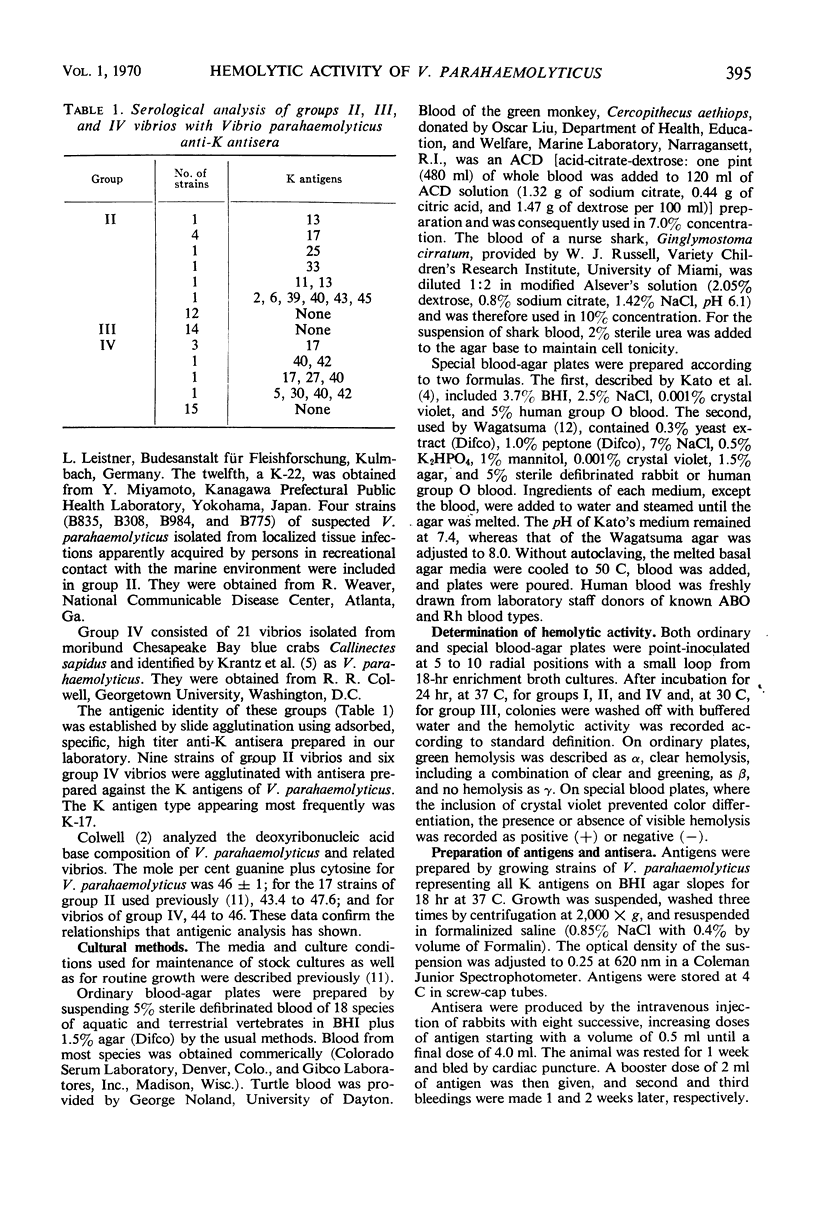
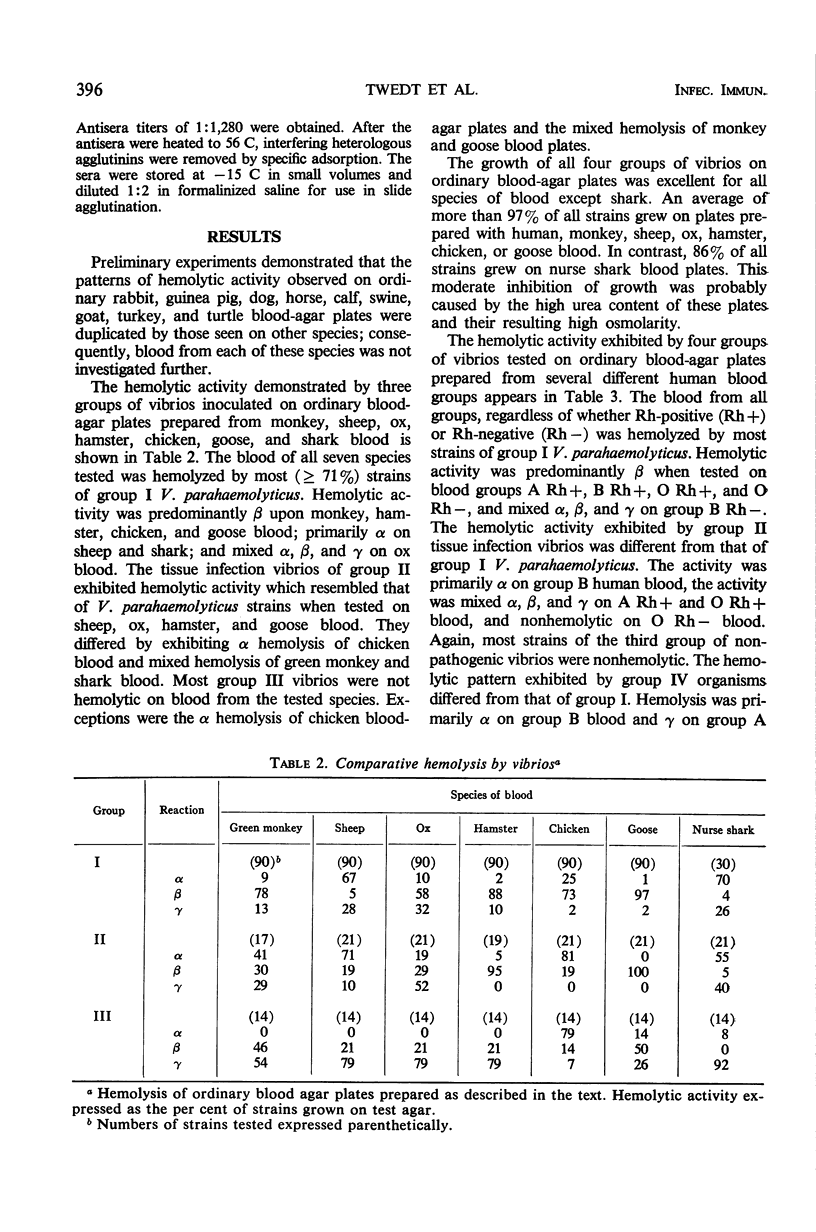
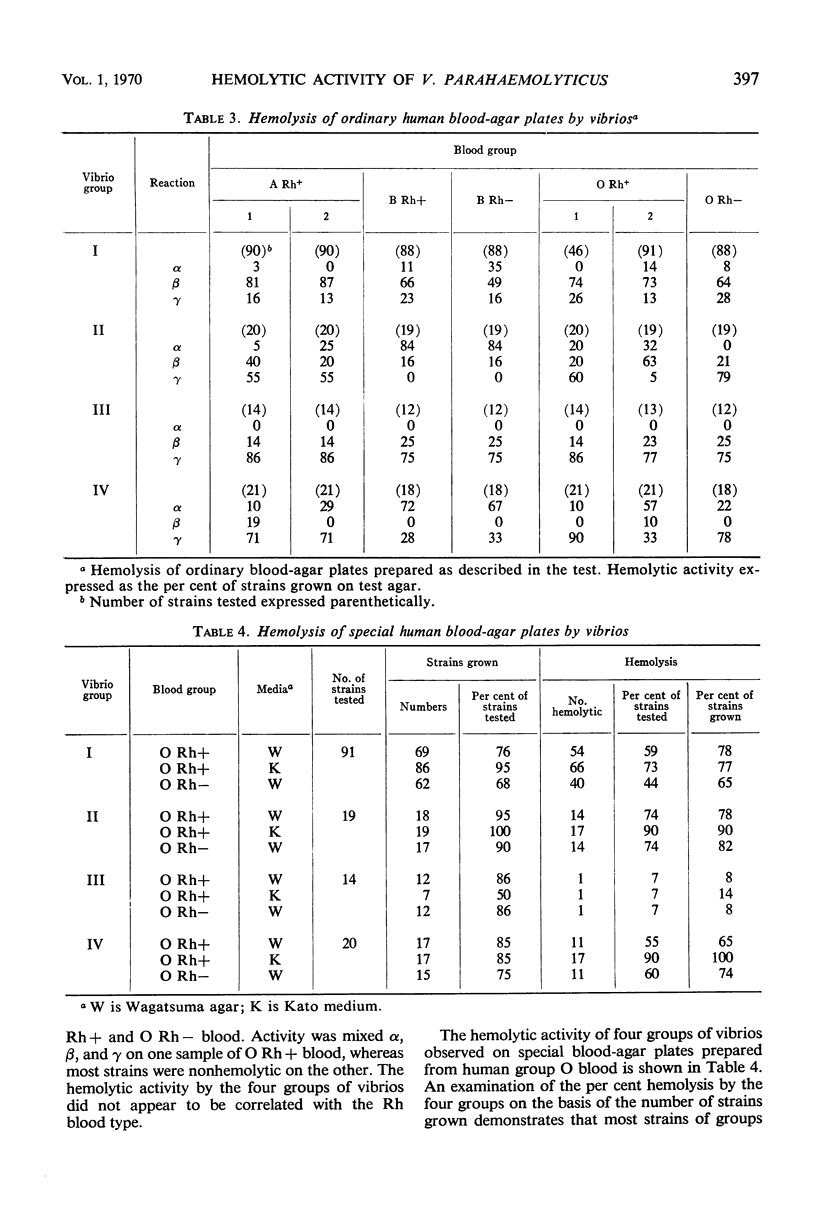
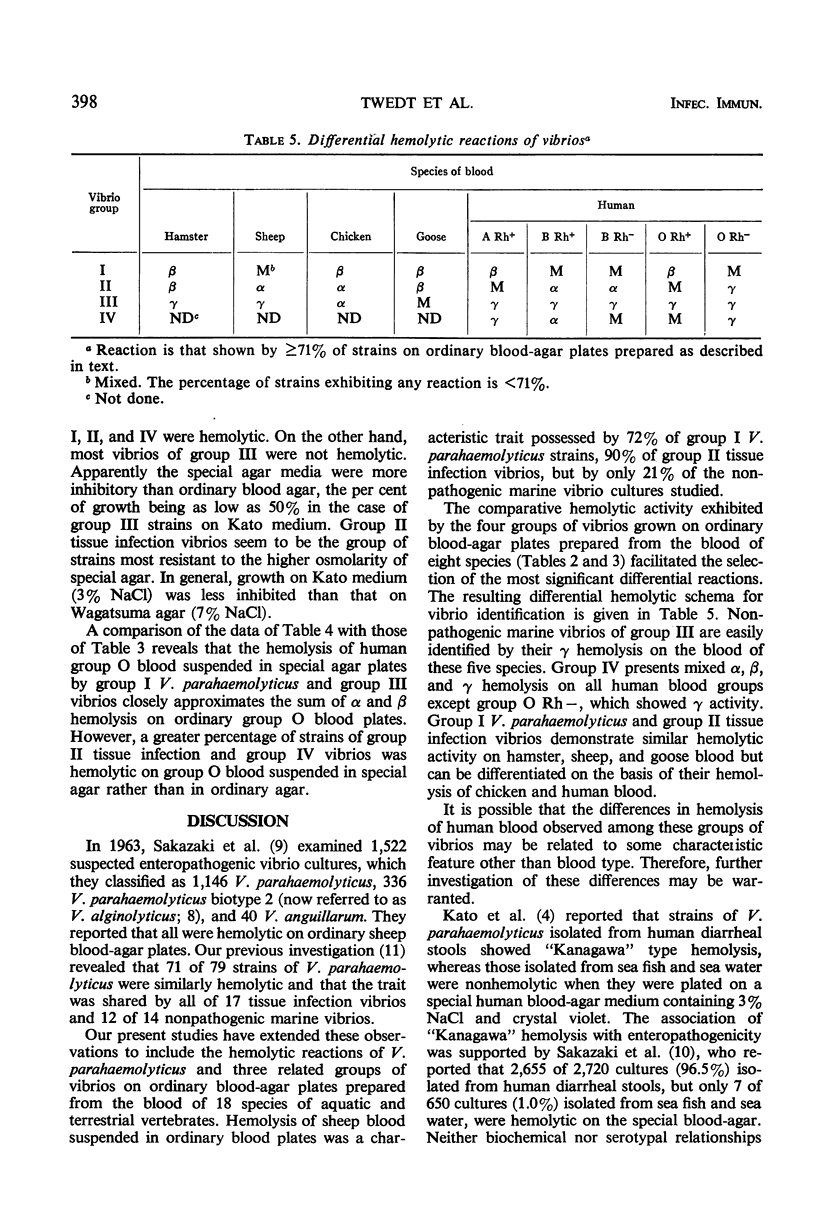
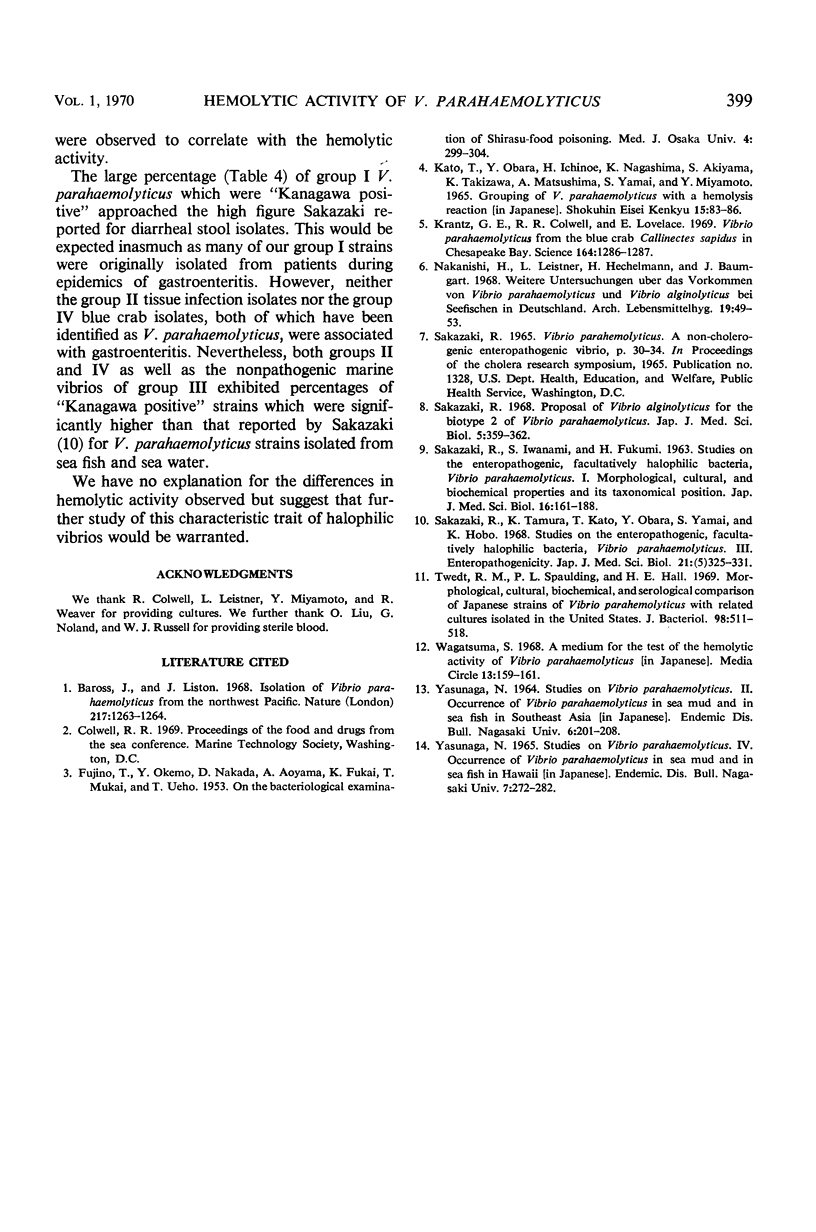
Selected References
These references are in PubMed. This may not be the complete list of references from this article.
- Baross J., Liston J. Isolation of vibrio parahaemolyticus from the Northwest Pacific. Nature. 1968 Mar 30;217(5135):1263–1264. doi: 10.1038/2171263a0. [DOI] [PubMed] [Google Scholar]
- Krantz G. E., Colwell R. R., Lovelace E. Vibrio parahaemolyticus from the blue crab Callinectes sapidus in Chesapeake Bay. Science. 1969 Jun 13;164(3885):1286–1287. doi: 10.1126/science.164.3885.1286. [DOI] [PubMed] [Google Scholar]
- SAKAZAKI R., IWANAMI S., FUKUMI H. STUDIES ON THE ENTEROPATHOGENIC, FACULTATIVELY HALOPHILIC BACTERIA, VIBRIO PARAHAEMOLYTICUS. I. MORPHOLOGICAL, CULTURAL AND BIOCHEMICAL PROPERTIES AND ITS TAXONOMICAL POSITION. Jpn J Med Sci Biol. 1963 Aug;16:161–188. doi: 10.7883/yoken1952.16.161. [DOI] [PubMed] [Google Scholar]
- Sakazaki R. Proposal of Vibrio alginolyticus for the biotype 2 of Vibrio parahaemolyticus. Jpn J Med Sci Biol. 1968 Oct;21(5):359–362. doi: 10.7883/yoken1952.21.359. [DOI] [PubMed] [Google Scholar]
- Sakazaki R., Tamura K., Kato T., Obara Y., Yamai S. Studies on the enteropathogenic, facultatively halophilic bacterium, Vibrio parahaemolyticus. 3. Enteropathogenicity. Jpn J Med Sci Biol. 1968 Oct;21(5):325–331. doi: 10.7883/yoken1952.21.325. [DOI] [PubMed] [Google Scholar]
- Twedt R. M., Spaulding P. L., Hall H. E. Morphological, cultural, biochemical, and serological comparison of Japanese strains of Vibrio parahemolyticus with related cultures isolated in the United States. J Bacteriol. 1969 May;98(2):511–518. doi: 10.1128/jb.98.2.511-518.1969. [DOI] [PMC free article] [PubMed] [Google Scholar]


